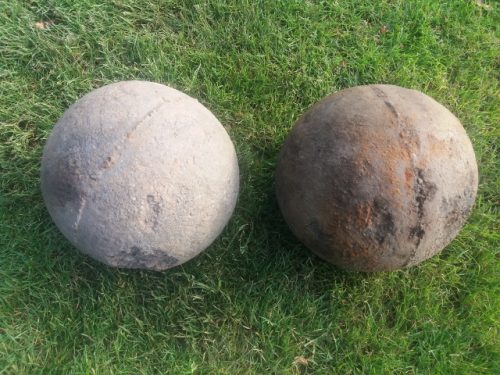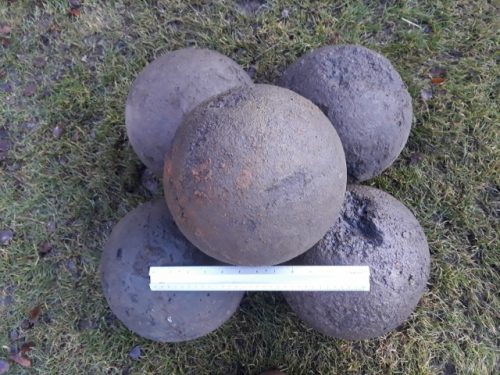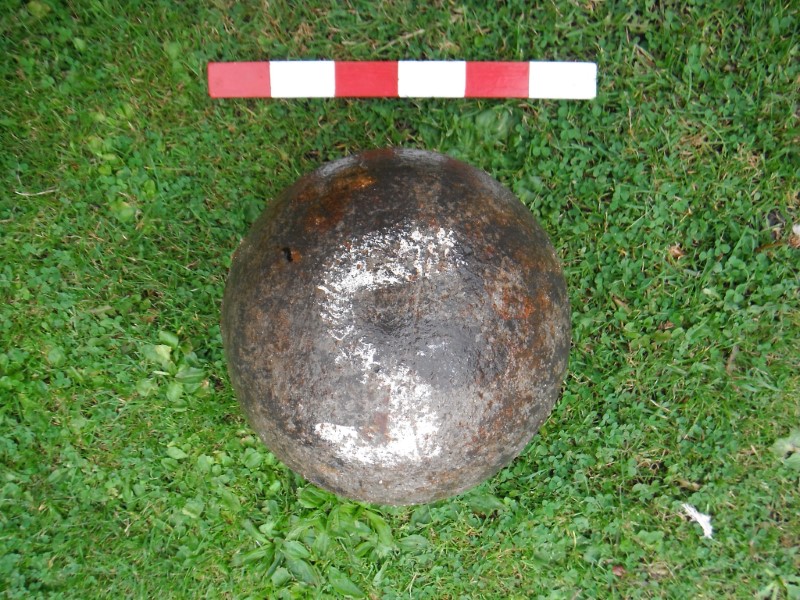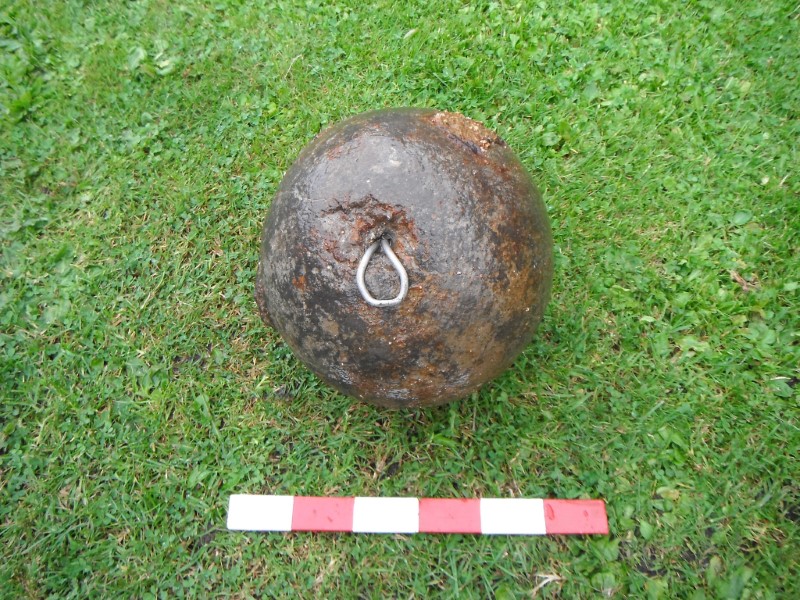Slag retention balls manufactured at the Manuel Works, Whitecross.
These two balls were found at the Manuel Works, Whitecross during ground levelling activities.
They measure 9″ in diameter which is about ¼” larger than a football.
Many thanks to Alex Steven and Harry Wilson for the following information.
Harry – These balls are probably slag retention balls which were made at Manuel of magnesite based concrete containing steel shavings. These were thrown into the basic oxygen vessel at the end of the cast and floated on the surface of the molten steel and slag. On turning the vessel to empty it, the steel ran out into the ladle and the ball floated on the slag as the steel ran out. One of the balls then floated into the tap hole sealing it and retaining the slag in the vessel which was then rotated and the slag and ball emptied into a slag pot.
They are as cast, they were used only once then lost in the slag pot. A typical BOV vessel with a 37-minute turn round would use up to 34 balls per day at max efficiency. They were sold at around £15/ball. They were replaced by a slide gate system attached to the tap hole to shut off the flow when the last of the clean steel passed through a much more effective system ensuring no slag from the BOV got through. They were used in the late 70s and 80s before being superseded by slide gates in the main plants. They may have continued to be used in plants with vessels with a capacity of less than 150 tonnes (Ravenscraig?)
Alex – “These spheres were made of refractory cement … with metal discs like washers embedded … they went on a vibrating tray up in the lances dept … might even have a core of barbed wire like the lances themselves. They may have had loops on them. Think they were chained together to remove slag from the steel ”
Charlie Sim states – “I used to make them when I was 20 in the early eighties. These were for the steelworks. I also used to make purging lances for them as well”
William Pirt states – We used to make them out of high alumina cement, steel punchings and iron ore, with a wire handle cast in to make them easier to lift. Had to be a certain density so that they would sink through the slag but float on the steel. They were cast into the bottom of a greased plastic bucket, left to set then lifted out when hard. Used to call them slag plugs. The binder was Ciment Fondu. We used to make them at Templetown labs, part of B S C Refractories Group, Consett. Must say never seen a round (spherical) one. All of ours were cast into bucket bottoms were almost cylindrical (bucket bottom shaped) and around 15 – 20 cm deep. We called them slag plugs but there were also slag darts, which were truncated cone-shaped so they could drop into the bottom teeming ring and close it off before the slag could got there. The unused spherical ones should have a casting flash around them if precast.

.

Below – A slag retention ball found at the same location by Ian Suddaby. This one has a steel lifting loop and has been sprayed or painted with a ‘S’ or a ‘5’.

.

Below – This is a cut section through one of the slag balls as arranged by Ian Suddaby. The internal metal shrapnel can be clearly seen.

















